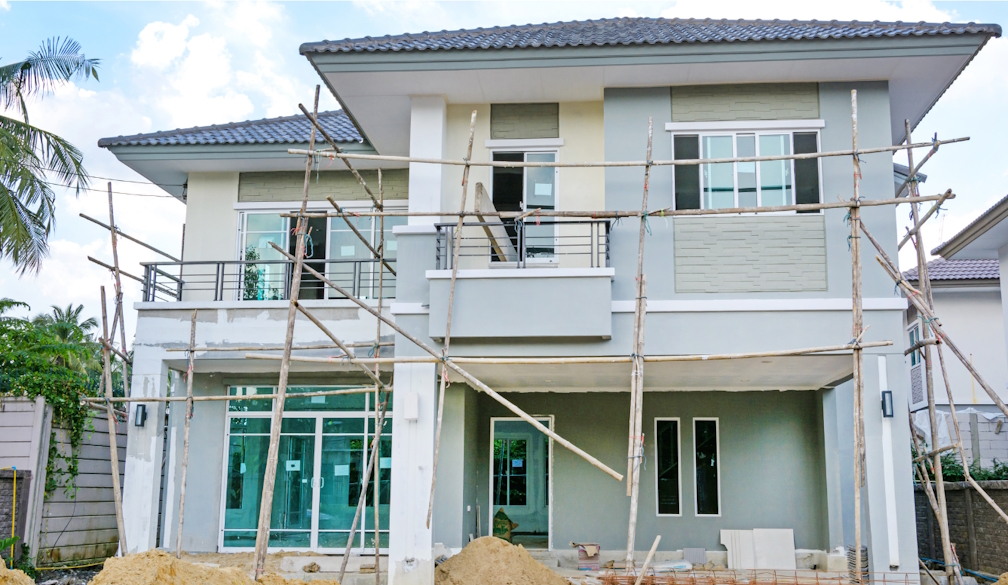Victoria’s planning reforms could help solve the housing crisis. But they are under threat
- Written by Brendan Coates, Program Director, Housing and Economic Security, Grattan Institute

The federal election campaign was dominated by the housing crisis. But the real power to solve it rests with the states.
In Victoria, reforms are underway that promise a bigger boost to the housing aspirations of younger generations than anything that occurs in the federal parliament.
Yet these reforms are now under threat of being killed off in the Victorian parliament. If that happens, Victoria will have fewer homes and they will be more expensive, and many more younger Melburnians will be locked out of home ownership.
We need to build more homes
At the heart of our housing problem is the fact we just haven’t built enough homes.
Australia has among the least housing stock per person[1] in the developed world. This is especially true in places where people most want to live: close to jobs, transport, schools and parks.
The reason is simple: we’ve made it hard to build more townhouses and apartments in the most desirable parts of our biggest cities.
Like in other states, Victorian state and local governments have long restricted medium- and high-density developments to appease local opposition. The Neighbourhood Residential Zone – the most restrictive residential zone in Victoria – covers more than 42% of residential land within ten kilometres of the Melbourne CBD[2].
And the politics of land-use planning – what gets built and where – favour those who oppose change. The people who might live in new housing in established suburbs – if it were to be built – don’t get a say.
The result is a vast “missing middle”: prime inner-city land, close to jobs and transport, with housing rising only one or two storeys. Melbourne, like Sydney, is one of the least-dense cities of its size in the world, despite the city’s population having risen by 875,000 in the past decade alone[3]. That is the equivalent of almost two Canberras.
It’s a myth that most Victorians want a quarter-acre block if that means living a long way from jobs, transport, shops and parks. Research by both Grattan Institute[4] and Infrastructure Victoria[5] shows there is substantial demand for townhouses and apartments in established suburbs, if only we built more of them.
If Melbourne’s middle suburbs – those between two and 20 kilometres from the CBD – were as dense as those of Toronto, that increase in density alone could accommodate all of the 800,000 extra homes[6] the state government plans to build over the next decade.
The flow-on effect is high prices and rents, a stagnating economy because fewer people can live close to jobs, and further expensive and environmentally damaging sprawl into farmland and floodplains.
Recent research[7] showed that 8,000 completed apartments in Melbourne remain unsold. Yet this is less than 3%[8] of all apartments in Melbourne, and is unsurprising given past sharp rises in interest rates and increased barriers in selling to foreign buyers.
That some newly built homes have taken longer to sell is not a reason to prevent the building of those extra homes that so many future Melburnians want to live in.
Victoria’s planning reforms are our best chance
Housing can become more affordable if we allow more homes to be built where residents most want to live.
The Victorian government’s recent reforms[9], like those in NSW[10], do just this. Its “activity centre[11]” program will allow more apartments around 60 rail stations and other transport hubs.
Victoria’s new Townhouse and Low-Rise Code[12] will streamline development approval processes for developments of three storeys or less in residential zones across the state. Where developments meet the code, those new homes will no longer need a planning permit and will be exempt from third-party appeals. This is already the case for knock-down rebuilds[13].
These reforms have the potential to unlock hundreds of thousands of extra homes in the coming decades in areas with some of the best infrastructure, amenities and public spaces.
Similar reforms in Auckland, starting in 2016, contributed to a home building boom that reduced rents by at least 14%[14]. Most of this new stock was townhouses and small apartment buildings, rather than high rises.
Urban density, if done well, can add to neighbourhood amenity[15] while preserving local green space. Several cities with similar populations but higher densities – such as Toronto and Berlin – match or outrank Melbourne on quality-of-life measures[16].
These reforms are now under threat
These changes do not dictate where housing must be built in Melbourne: they simply permit more housing where demand is highest.
Yet these reforms are now under threat. The Victorian Liberals and the Greens have teamed up to launch an inquiry[17] into the state Labor government’s reforms. The inquiry is scheduled to report on Tuesday, just one day before the deadline for disallowing the reforms lapses.
Together, the Liberals and the Greens have the power to revoke the changes in the upper house of the Victorian parliament. That would be a disaster for housing affordability in Victoria.
The Victorian parliament shouldn’t stand in the way of young families who want to buy a townhouse in the suburb they grew up in, or seniors downsizing to an apartment in their local neighbourhood.
These reforms are about allowing more homes, and creating a better, healthier, and more vibrant Melbourne.
References
- ^ least housing stock per person (theconversation.com)
- ^ covers more than 42% of residential land within ten kilometres of the Melbourne CBD (grattan.edu.au)
- ^ despite the city’s population having risen by 875,000 in the past decade alone (www.abs.gov.au)
- ^ Grattan Institute (grattan.edu.au)
- ^ Infrastructure Victoria (www.infrastructurevictoria.com.au)
- ^ the 800,000 extra homes (grattan.edu.au)
- ^ Recent research (www.theage.com.au)
- ^ less than 3% (abs.gov.au)
- ^ recent reforms (www.vic.gov.au)
- ^ like those in NSW (www.abc.net.au)
- ^ activity centre (www.vic.gov.au)
- ^ Townhouse and Low-Rise Code (www.planning.vic.gov.au)
- ^ This is already the case for knock-down rebuilds (www.yimby.melbourne)
- ^ home building boom that reduced rents by at least 14% (www.huduser.gov)
- ^ can add to neighbourhood amenity (www.yimby.melbourne)
- ^ match or outrank Melbourne on quality-of-life measures (www.productivity.nsw.gov.au)
- ^ launch an inquiry (www.parliament.vic.gov.au)




















